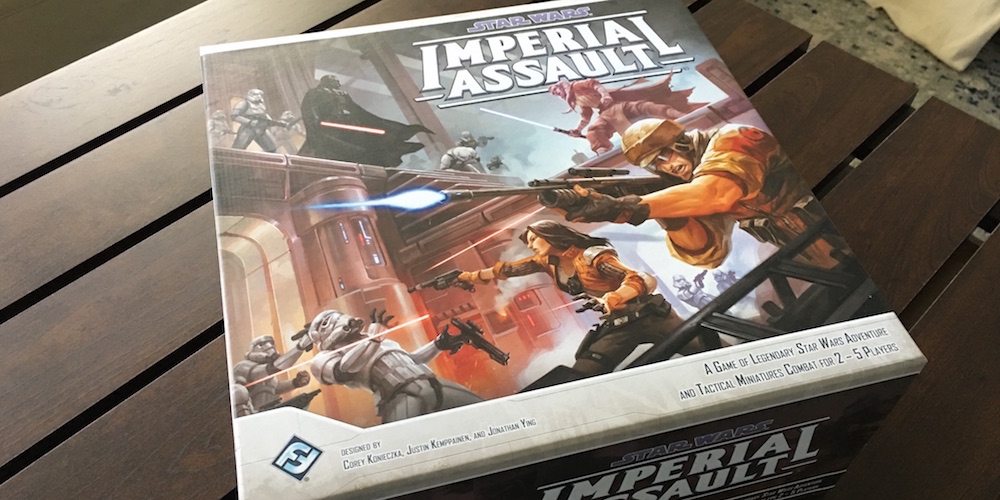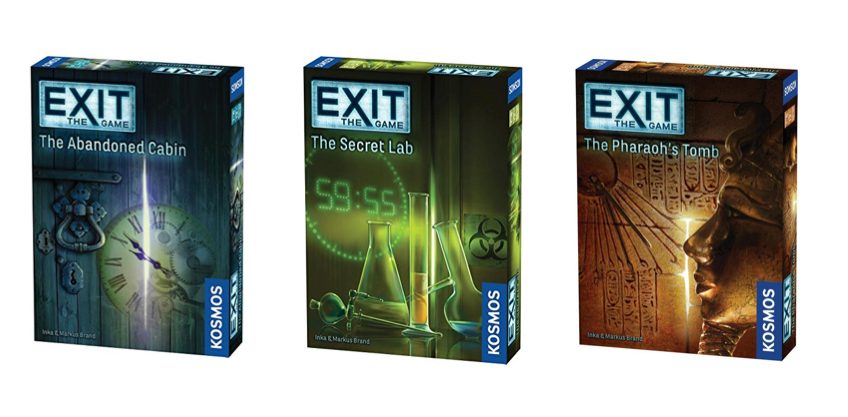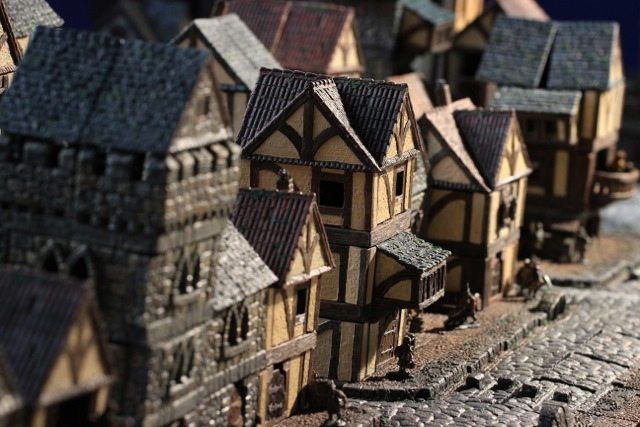Overview: It had been a while since Dungeons & Dragons issued a proper board game, so when Castle Ravenloft was issued last year, it was met with a lot of excitement and acclaim. Not ones to miss out on an opportunity, Wrath of Ashardalon, a game similar to Ravenloft, quickly followed. But the sequel was so brutal, it left many players whimpering and cowering in a dark corner. Perhaps the sadists at Wizards of the Coast recognized how evil Ashardalon was and decided they would play nice or maybe they just thought they would try something else. Whatever the reason, Conquest of Nerath, a really wonderful Risk-style game where opposing armies battle each other for conquest of territories, will be hitting shelves this week.
Players: 2 to 4 players
Ages: The box says 12 and up, although younger kids can play (and will want to, thanks to all the great minis), but may miss out on some of the strategy involved in this game.
Playing time: This is a game that requires a bit of a commitment. Setting up the first time, by myself, took about 30 minutes. In following games and with the help of others, we were able to cut that significantly. The box says a game should run between 2 and 4 hours. That’s consistent with our games, although there’s a variant that I could see driving the game beyond that time frame.
Retail: $79.99
Rating: Excellent. After playing a few times, we keep discovering new strategies for earning victory points. Plus, we keep having a really good time.
Who Will Like It: If you like war games like Risk or Axis & Allies, you will like Conquest of Nerath. Or if you’re a fantasy or D&D fan, you’ll enjoy letting your dragons sweep down on hopeless foot soldiers or battling beholders with your wizards.
Components: Wow. You definitely get your money’s worth out of this box. There’s a big, 30″ x 21″ board with a gorgeous map that’s divided into about 100 different land and seas territories. Each realm has a reference card and control markers, which allow you to identify which army has taken control of enemy territory. There are also gold tokens, event cards, treasure cards, dungeon guardian tokens, a collection of dice and a rule book.

 But the stars of the game are the 252 plastic minis – 63 for each realm. I really like the detail that went into sculpting these, they’re very nice and certain pieces – monsters, foot soldiers, fighters and dragons differ from realm to realm (see image or slideshow, below) – while others that look similar in the box (foot soldiers and wizards) have different shaped bases for easy identification. Someone put a lot of thought into these. Plus, the quality is very good; I didn’t find a warped spear or bent bow in my bunch.
But the stars of the game are the 252 plastic minis – 63 for each realm. I really like the detail that went into sculpting these, they’re very nice and certain pieces – monsters, foot soldiers, fighters and dragons differ from realm to realm (see image or slideshow, below) – while others that look similar in the box (foot soldiers and wizards) have different shaped bases for easy identification. Someone put a lot of thought into these. Plus, the quality is very good; I didn’t find a warped spear or bent bow in my bunch.
The other thing that made me very happy about opening the box is that all of these components can be organized in a really nice plastic tray. A lot of imagination went into the tray and I appreciate being able to quickly find the token or piece I need – especially with as many pieces as there are in this game.
Gameplay: After placing all the pieces in their beginning territories – the map has an icon for each piece belonging in a land or the back of a player’s reference card clearly illustrates which pieces go where – players need to decide which army will be theirs. The game can be played either with alliances or as a free-for-all. Depending on your choice, different rules apply that govern armies crossing friendly territories, battles and conditions for victory.
In a two-player game, one player will control the Dark Empire of Karkoth, a collection of warlocks and necromancers, and the Iron Circle, a balanced army of goblins and mercenaries; the other player controls the Vailin Alliance, elven warriors who hold an advantage in the sea, and the Nerathian League, an alliance of humans and dwarves, wedged between the undead and the goblins. In a three-player game, one player assumes the Vailin & Nerath, while the other two players each control the Karkoth or the Iron Circle. A four-player game assigns an army to each player.
Armies are assigned a collection of event cards and a beginning treasury and play is ready to begin. Play follows the same order each round and the sequence of play is consistent among armies: First, a player draws an event card from his deck. Event cards are either played immediately, according to a card’s instructions, or saved to be played later at a player’s discretion. Event cards give advantages to a player’s attack or defenses. (After the horrible events that would occur every time you flipped an event card in Ravenloft and Ashardalon it was actually refreshing to turn cards that resulted in positive things happening to you.)
The second step is to move all the pieces you want to move. With the exception of your castles, every piece can move and there is no limit to the number of pieces that can be moved, but each does have a limit to the distance the piece can move in a round. For instance, foot soldiers can only move one territory, while dragons can move up to five.
If you’ve moved into an enemy’s territory, battles take place in the third step of a player’s turn. This is where the dice come in. Basically, every piece has a single hit point, except for dragons, which take two damage. (If a dragon escapes combat without maxing out damage, it immediately recovers to two hp.) In order to inflict damage, you must roll a six or higher. However, not all pieces are equal. Foot soldiers can only roll a d6, castles and dragons a d20 and all other pieces something in between. Some dungeon monsters roll multiple, different dice and some creatures have first strike ability that allows them to attack (and deal damage) before anyone else can roll. Battles can continue for as many rounds as the attacking force chooses.
According to WotC Senior RPG Designer, Rich Baker “The idea is, if I move my pieces into your space, there’s going to be a fight. During a fight, we both attack each other – so the defending force rolls to score hits on the attacking force at the same time the attacking force rolls to score hits on the defending force. Each piece in the battle makes one attack (rolls its die one time) during each round of the battle.”

 Players then reposition units (heroes can exit dungeons, flying forces can move) and the player is free to reinforce by purchasing new units with the money in his treasury. These units must be placed in territories with a castle he controlled at the beginning of his turn, or adjacent to it in cases of water based units. Finally, the player earns income for each territory he controls.
Players then reposition units (heroes can exit dungeons, flying forces can move) and the player is free to reinforce by purchasing new units with the money in his treasury. These units must be placed in territories with a castle he controlled at the beginning of his turn, or adjacent to it in cases of water based units. Finally, the player earns income for each territory he controls.
Play continues from realm to realm until each has run through a sequence of play and then it starts again from the top. The goal of the game is to score a certain number of victory points, which can be earned in one of three ways: for each territory captured, a point is awarded. If you can capture a realm’s kingdom, that’s worth a whopping five victory points and vanquishing a dungeon’s guardian(s) will earn you a treasure card which, besides giving you a game benefit, also awards you 1-3 victory points.
We played a short alliance game to 20 victory points and a short free for all short game to 13 points. The first variation took about three hours (with an indecisive son as an opponent) and a little over two hours in the free for all game. There are variations for medium length game that increase the victory point requirement and long games that demand capturing all capitals or collecting a certain number of treasures.
My biggest complaint are the reference cards. They don’t do a very good job of conveying key information, so we found ourselves constantly picking up the rule book. Not only that, since they are two-sided, some information (and cards and tokens) are placed on one side, but information you need is on the underside. In the scheme of things, this is a small complaint and one I’ll remedy by making my own cheat sheets, but it is a little annoying.
Conclusion: I really, really liked this game (and I’m not even a very big fan of war games). It’s a great combination of strategy and luck because, while a good plan is important to winning, you still have to roll your dice to get there. Plus with the way territories are arranged on the map, battles begin immediately on the very first turn – so the action is nonstop from beginning to end. What’s more, because you are replenishing troops every round, you’re never really out of contention. Conquest of Nerath is a great game and definitely worth adding to your collection.
Conquest of Nerath releases this week and can be found at your friendly local game shop or online.
Disclosure: GeekDad was sent a review copy of this game.





